- With standard equipment
- With safety pack
Find more information in the General Comments section of the assessment
Find more information in the Rating Validity tab of the assessment
- See More
- See More
- See More
- See More
- Good
- Adequate
- Marginal
- Weak
- Poor
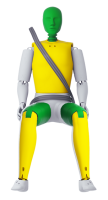 Passenger
Passenger
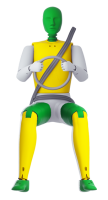 Driver
Driver
 Rear Passenger
Rear Passenger
 Driver
Driver
 Car
Car
 Pole
Pole
 Rear Seat
Rear Seat
 Front Seat
Front Seat
- Good
- Adequate
- Marginal
- Weak
- Poor
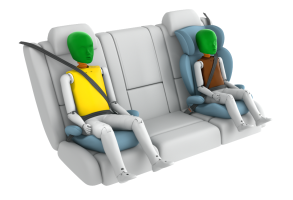
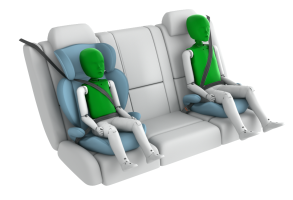
Passenger
outboard
center
Fitted to the vehicle as standard
Not fitted to the test vehicle but available as option
Not Available
-
i-Size CRS
-
ISOFIX CRS
-
Universal Belted CRS
Easy
Difficult
Safety critical
Not allowed
| Seat Position | ||||
|---|---|---|---|---|
| Front | 2nd row | |||
| Passenger | Left | center | Right | |
| Maxi Cosi 2way Pearl & 2wayFix (rearward) (iSize) | ||||
| Maxi Cosi 2way Pearl & 2wayFix (forward) (iSize) | ||||
| BeSafe iZi Kid X1 i-Size (iSize) | ||||
| Maxi Cosi Cabriofix & FamilyFix (ISOFIX) | ||||
| BeSafe iZi Kid X3 ISOfix (ISOFIX) | ||||
| Britax Römer Duo Plus (ISOFIX) | ||||
| Britax Römer KidFix XP (ISOFIX) | ||||
| Maxi Cosi Cabriofix (Belt) | ||||
| Maxi Cosi Cabriofix & EasyBase2 (Belt) | ||||
| Britax Römer King II LS (Belt) | ||||
| Britax Römer KidFix XP (Belt) | ||||
Easy
Difficult
Safety critical
Not allowed
In the frontal offset test, protection of the 6 and 10 year old dummies was good apart from the neck, for which tensile forces indicated marginal protection and, for the 10 year dummy, the chest, for which decelerations indicated a marginal level of protection. The front passenger airbag can be disabled to allow a rearward facing child restraint to be used in that seating position. Clear information is provided to the driver regarding the status of the airbag and the system was rewarded.
- Good
- Adequate
- Marginal
- Weak
- Poor

Head Impact 13.7 Pts
Pelvis Impact 6.0 Pts
Leg Impact 5.1 Pts
| System Name | Autonomous Emergency Braking | ||
| Type | Auto-Brake with Forward Collision Warning | ||
| Additional Information | Defaults on for every journey; operates above 40km/h and in low ambient light | ||
| PERFORMANCE | | |||
| Autobrake Function | |||
| Avoidance | Mitigation | ||
|
Running Adult crossing from Farside
|
Collision avoided up to 40 km/h | Impact mitigated up to 55 km/h | |
|
Walking Adult crossing from Nearside -25%
|
Collision avoided up to 40 km/h | Impact mitigated up to 60 km/h | |
|
Walking Adult crossing from Nearside -75%
|
Collision avoided up to 60 km/h | ||
|
Running Child from behind parked vehicles
|
Collision avoided up to 30 km/h | Impact mitigated up to 45 km/h | |
The bonnet provided predominantly adequate or marginal protection for the head of a struck pedestrian, with poor results recorded on the stiff windscreen pillars. The protection provided to pedestrians' legs by the bumper was good at most test locations while protection of the pelvis was good at all points tested. The autonomous emergency braking system reacts when pedestrians are in danger of being struck. The system performed well in Euro NCAP's tests, managing to avoid collisions or to mitigate their severity in several of the test scenarios.
- Good
- Adequate
- Marginal
- Weak
- Poor
| System Name | Speed Limiter |
| Speed Limit Information Function | N/A |
| Warning Function | Manually set |
| Speed Limitation Function | Manually set (accurate to 5km/h) |
| Applies To | All seats | ||
| Warning | Driver Seat | Front Passenger(s) | Rear Passenger(s) |
| Visual | |||
| Audible | |||
|
|||
| System Name | Lane Keep Assist System |
| Type | Lane Keep Assist and Lane Departure Warning |
| Operational From | 60 km/h |
| Warning | Audible and Visual |
| Performance | |
|
LKA Confirmation Test
|
Pass (5/5) |
|
LDW Confirmation Test
|
Pass |
| System Name | Autonomous Emergency Braking | |||
| Type | Forward Collision Warning with Auto-Brake | |||
| Operational From | 8 km/h | |||
| Additional Information | Default On | |||
| Performance | | ||||
| Autobrake Function Only | Driver reacts to warning | |||
| Operational Speed | 8-180 km/h | 8-180 km/h | ||
| Approaching a stationary car | See AEB City | Crash avoided up to 65km/h.Crash speed reduced up to 80km/h. | ||
| Approaching a slower moving car | Crash avoided up to 70km/h. | Crash avoided up to 80km/h. | ||
| Following a car at short distance | ||||
| Car in front brakes gently | Avoidance | Avoidance | ||
| Car in front brakes harshly | Avoidance | Avoidance | ||
| Following a car at long distance | ||||
| Car in front brakes gently | Avoidance | Avoidance | ||
| Car in front brakes harshly | Avoidance | Avoidance | ||
The Ioniq has as standard: a seatbelt reminder system for front and rear passengers; a driver-set speed limiter; a lane support system that warns the driver when the car is drifting over a lane marking and gently steers the car away from the lane edge; and an autonomous emergency braking system which operates at highway speeds and which performed well in Euro NCAP's tests, managing to avoid collision in many of the test scenarios.
- Specifications
- Safety Equipment
- Videos
- Rating Validity
Specifications
Tested Model Hyundai Ioniq Hybrid
Body Type - 5 door hatchback
Year Of Publication 2016
Kerb Weight 1370kg
VIN From Which Rating Applies - all Ioniqs including electric and PHEV
Class Small Family Car
Safety Equipment
Note: Other equipment may be available on the vehicle but was not considered in the test year.
Fitted to the vehicle as standard
Fitted to the vehicle as part of the safety pack
Not fitted to the test vehicle but available as option or as part of the safety pack
Not available
Not applicable
Videos
Rating Validity






Find more information in the General Comments section of the assessment
 Share
Share
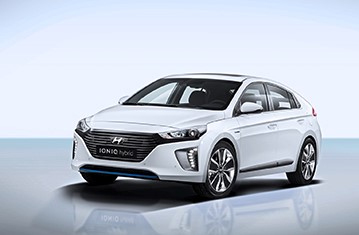




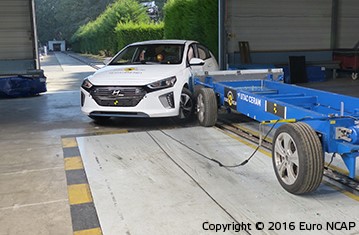
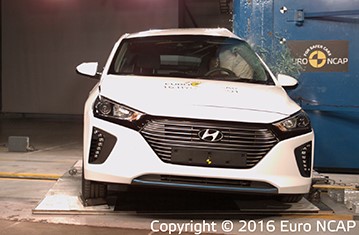
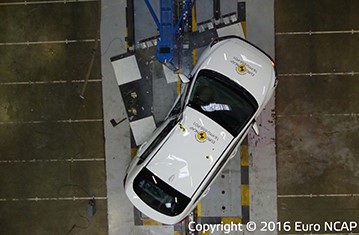



The passenger compartment of the Ioniq remained stable in the offset deformable barrier frontal impact. Dummy readings indicated good protection of the knees and femurs of both the driver and passenger. Hyundai showed that a similar level of protection would be provided to occupants of different sizes and those sat in different positions. In the full width rigid barrier test, readings from the rear passenger dummy indicated marginal protection of the chest. The pelvis slipped under the lap part of the seatbelt, indicated by a sudden drop in load, and protection of this body region was rated as poor. In both the side barrier test and the more severe side pole impact, protection of all critical body regions was good and full points were scored. Tests on the front seats and head restraints demonstrated good protection against whiplash injuries in a rear-end collision. A geometric assessment of the rear seats indicated marginal whiplash protection. A standard-fit autonomous emergency braking system provides additional protection against whiplash injury. In Euro NCAP's tests, the system scored full points, avoiding collisions against a stationary car at all test speeds.